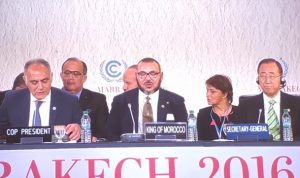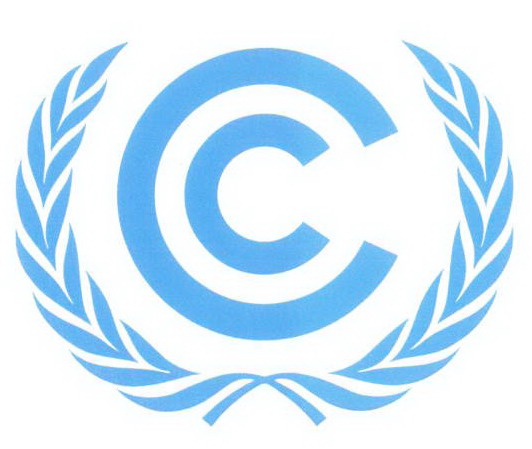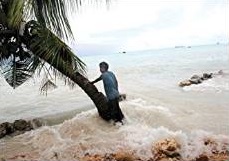
The second week of COP22 – the 22nd Meeting of the Conference of the Parties (COP) to the United Nations Framework Convention on Climate Change (UNFCCC) – got underway yesterday in Marrakech. The mood at the conference center is notably different from last week. The number of attendees seems to have doubled, as does the security presence, with hundreds of armed police stationed around the center. On arriving this morning, I was stopped by United Nations security forces, who held me back as Secretary General Ban Ki-moon passed by, almost entirely hidden by photographers. This has become a familiar sight in recent days, with many government ministers arriving to take part in high level discussions.
A key focus of the discussions will likely be on financing climate change mitigation and adaptation in developing countries. It is widely accepted that developing countries require additional financial assistance, particularly for adaptation activities, which have historically been funded at significantly lower levels than mitigation. Reports filed with the United Nations indicate that, of the bilateral funding developed countries provided to developing countries in 2014, sixty-six percent went to mitigation activities and just fourteen percent to adaptation, with an additional seventeen percent going to joint projects.
In the Paris Agreement, reached last year at COP21, “parties recognize[d] the importance of support for and international cooperation on adaptation.” Many hoped that COP22 would result in an agreement to increase funding for adaptation, perhaps through an extension of the Adaptation Fund established under the Kyoto Protocol. The Adaptation Fund, which supports projects to help developing countries adapt to climate change, was created in 2001 at the last COP held in Marrakech (i.e., COP7). It would, therefore, be fitting if Marrakech were the site of a new agreement to continue the Adaptation Fund under the Paris Agreement. That seems unlikely, however.
It appears that most countries do not support the making of a decision on the future of the Adaptation Fund at COP22. In negotiations last week, many developing countries suggested that a decision be made next year during COP23, while most developed countries advocated further delaying the decision, until COP24 in 2018. Both outcomes are likely to disappoint environmentalists and others, particularly here in Africa, where action is urgently needed to adapt to climate change. It’s not all bad news, however.
Over the last week numerous developed countries have reaffirmed their commitment to funding climate change mitigation which, as noted in the Paris Agreement, “can reduce the need for adaptation.” At a side event yesterday, for example, the European Commissioner for Climate and Energy reported that Finland and Norway would join the Mission Innovation partnership. As part of the partnership, twenty-two countries and the European Union have pledged to double funding for clean energy research over the next five years, to $30 billion annually. Among the twenty-two countries is Saudi Arabia, whose Energy Minister yesterday reported that it is investing heavily in clean energy, as part of its commitment “to taking the lead in finding solutions” to climate change.
The recent growth in support for clean energy and other climate change mitigation strategies is a welcome development. There is, however, still more work to do. At the opening of the high level discussions this morning, United Nations Secretary General Ban Ki-moon urged developed countries to provide “$100 billion by 2020 to help developing countries to mitigate and adapt to climate vulnerability.” Exactly where this money will come from and how it will be distributed remains to be seen. In a presentation yesterday, U.S. Energy Secretary Ernest Moniz jokingly told the crowd he would “pass around a hat,” so that we could each contribute. Let’s hope it doesn’t come to that.
Romany Webb is a Research Scholar at Columbia Law School, Adjunct Associate Professor of Climate at Columbia Climate School, and Deputy Director of the Sabin Center for Climate Change Law.





